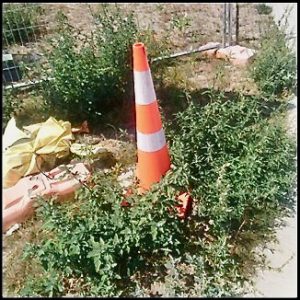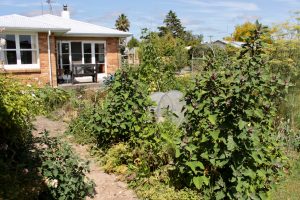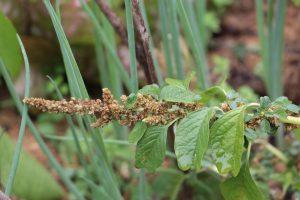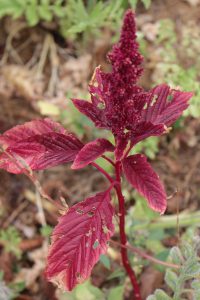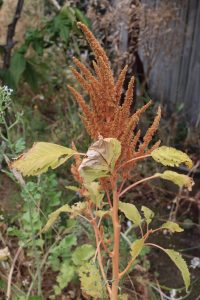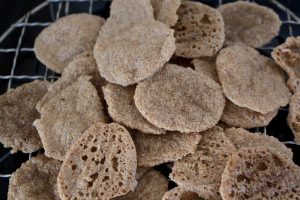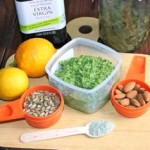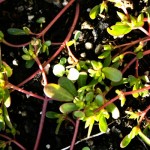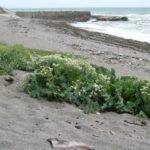Happy New Year! This is my first blog for 2020. Its going to be a fantastic year! We in the Bay of Plenty, N.Z., are experiencing exceptionally hot and dry weather which is tough on vegetables but not on those plants we call ‘weeds’. I am amazed how my unmown lawn down the drive is a sea of yellow flowering Catsears Hypochaeris radicata (dandelion relative). They just look lovely and the bees work them. I’d much rather see bright flowers than dry, dead grass.
Over at Bayfair amongst the road works in the dust, Fat hen or Lamb’s quarters Chenopodium album was thriving and looking very leafy. It looks even leafier in my garden and provides protein rich spinach like leaves. It’s cousin Magenta spreen or Tree spinach Chenopodium giganteum with its pretty pink new leaves is even more prolific. Both would get to 2 metres plus if I allowed them to. I use them in smoothies, stir fries and salads.
Another summer annual is wild Amaranth Amaranthus viridus. There are many other varieties and this year I have Golden amaranth and
Red amaranth, as well as a red, yellow, green leafed one. The leaves are totally edible as well as the seeds. I use the leaves for summer salads and smoothies. The leaves contain three times more calcium and niacin (B3) than spinach leaves. They are also an excellent source of vitamin A in the form of antioxidant carotenoids, iron, calcium, protein, vitamins C, K, riboflavin (B2), pyridoxine (B6), magnesium, potassium, phosphorous, zinc, copper and manganese.
Amaranth was first cultivated by the Aztecs more than 8,000 years ago
and is now popular as a gluten-free, high-protein grain. When the seeds ripen they are great to turn into crackers. They have a rich nutty flavour and high beta-carotene, iron and calcium content. They are also high in potassium, zinc, Vitamins B and E and protein. I didn’t have enough seeds on my plants so I bought seeds to make this recipe and added some of my own.
Amaranth crackers
1 cup amaranth , 3 cups water, pinch salt, 1 tablespoon sunflower or olive oil
Makes about 50 crackers
Cook the amaranth and water in a medium pot over a high flame. Bring to a boil, reduce the heat and simmer until the amaranth becomes sticky and forms a thick dough. Stir in the oil and allow to cool.
Preheat oven to 150 Celsius. Line a baking tray with baking paper, or use a silicone mat. Working with a teaspoon, put small mounds of the dough onto the prepared baking sheet and lightly flatten with your fingers until they are as thin as possible, about 3mm. I wet my fingers so they wouldn’t stick to the dough. Bake until firm, about 1 hour, depends on thinness. Allow to cool thoroughly before removing.
Alternatively, shape little patties as thinly as possible and set in a food dehydrator. Dehydrate until very crisp. The crackers are great to eat with pesto or humus.
